Here are images for the next issue.

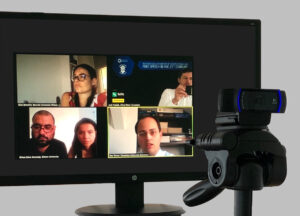
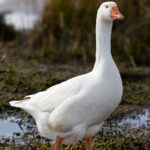
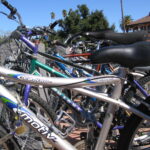

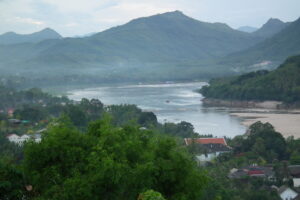
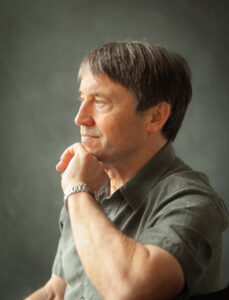

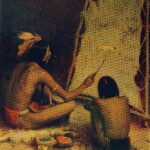

 The Writer's Workshop
The Writer's Workshop
Travel writing is one of the most satisfying and diverting kinds of writing. It calls on all of the skills of a creation nonfiction writer—dramatic scenes, character sketches, concrete detail, point of view, scene by scene construction. It’s very difficult to do well, but here are 10 tips for succeeding at it.
Rich Read wanted to tell a story. He’d visited southeast Asia and saw an immense economic crisis unfolding. But how to make that interesting to a general reader of the Oregonian where he worked as a reporter?
“I didn’t want to write an economic treatise because no one would read it,” he said when he spoke to my fall writing class for The Writer’s Workshop. “I wanted to find a product from the Northwest, sold to the middle class, and follow it. I started casting around and came up with idea of French fry which is a multi-billion dollar industry. The russet Burbank potato is perfect for fast food French fries. It was a crazy idea for a regional newspaper.”
The proposal was denied, so he retooled it and sent it again. Denied. Then managing editor Therese Bottomly got wind of it. “I love this story,” she said. “We’ve got to do it.”
Rich was assigned to work with editor Jack Hart, a specialist in narrative writing, and author of Storycraft which I use in my writing courses for The Writer’s Workshop.
“What are you trying to do?” Jack said.
“I want to follow the river of French fries,” Rich explained.
“You want one container to give it drama and specificity,” Jack said. “You need to find one container and follow it around the world.”
Rich took Jack’s advice, found such a container, and wrote a terrific story about French Fries and the global supply chain.
“Writing is always harder than the reporting,” he said. “This was my first try at narrative writing. Jack Hart walked me through how to do it. We chose John McPhee as a model because he’s such a great explanatory writer. Each scene would have a point.”
It ended up being a multipart series and got a great reaction. When Rich returned to the office, there was a bouquet of flowers on the desk and a note, “You’re a finalist for the Pulitzer.”
On day of the awards, the editorial staff gathered in the newsroom to hear he’d won it. “They wheeled in crates of MacDonald’s French fries and champagne,” he says. “It was really great for the paper.”
Read the story here: https://www.pulitzer.org/winners/richard-read.
Richard Read is a freelance reporter based in Seattle, where he was a national reporter and bureau chief for the Los Angeles Times from 2019 to 2021. A two-time Pulitzer Prize winner, he was a senior writer and foreign correspondent for The Oregonian, working for the Portland, Oregon newspaper from 1981 to 1986 and 1989 until 2016.
SUMMARY SCENE OPENINGS – WRITING PROCEDURE
COPYRIGHT THE WRITER’S WORKSHOP
Scenic writing is the basis for some of the most moving, satisfying, sophisticated works of literature. It is especially effective in bringing readers into the story because it helps them create a world, a world that you the writer have inhabited and can share with the reader through words. Scenes present a visual, sensual world the reader can inhabit, a kind of imaginary garden with real toads, whether that’s the world of the astronaut program of Tom Wolfe’s The Right Stuff, the vast landscapes of the Southwest in the work of Terry Tempest Williams, or the hard-bitten, humorous Irish Catholic childhood of memoirist Frank McCourt or the travel stories of V.S. Naipaul.
1) SETTING THE SCENE
This transition usually leads to a nut graph, a paragraph that suggests or explains the larger point or goal of the scene and furnishes its larger context. It’s called a nut graph because it puts all of these things together in a nutshell. Who? What? When? Where? And most importantly, why? As in, why should the reader care? What will the scene accomplish?
For more on how to set a scene, please sign up for my winter narrative and Seattle writing class, Follow the Story.
How to Promote Your Book
Promoting a book is not often an author’s favorite past time, but it can reap huge dividends in exposure and book sales. Molly Woolbright, the publicist at Sasquatch Books, visited my summer Seattle writing class, Writing Your Story, to provide insight into the process.
“I will broadly describe how a publicist at a traditional publisher approaches a book’s campaign and hopefully demystify the process,” she explained.
Woolbright emphasized that digital marketing has taken on new importance in a time of social distancing. In the past, book tours and talks made up a significant part of the marketing plan. With those options limited , other strategies need to be developed, including talks and meetings via Zoom and other web conferences.
She detailed a number of effective ways of getting the word out about your book. I’ll include the highlights of her talk to my Seattle writing class, Writing Your Story, below:
Overview of Book Publicity
An in-house publicist at a traditional publisher works on a variety of books at a time, striving to secure a mix of trade reviews and regional and national media for each. From the general public’s perspective, a book campaign is typically about 3 months long; from an author and publisher’s perspective, the work begins at least 6 months before a book is published.
Long-Lead Media
About 6-8 months out from publication
Advance reader copies (otherwise known as ARCs or galleys) sent to media outlets that work far in advance, including: Print magazines, Trade journals (Publishers Weekly, Library Journal, Booklist, etc.), Podcasts.
Short-Lead Media
About 1-2 months out from publication
Finished copies sent to media outlets that work on a shorter timeframe, including: Newspapers, radio, TV, blogs.
Local/Regional Media
Often overlooked in favor of bigger or more prestigious national media outlets, your local newspaper, magazines, blogs, radio, and TV stations are a great starting point to build buzz (while still striving for national hits). The Amazon algorithm is fed by any and all publicity, and local media is more likely to take notice.
Optimizing Your Author Platform for Media
Book promotion, regardless of genre, is often more about the author than the book—it’s about you and the expertise you can provide or discussions you can spark. Whether you’re working with an in-house publicist or you’ve hired a freelancer, one of the most helpful steps you can take to assist her efforts in securing media is to boost your online presence.
Website
From a publicity perspective, a website is the most useful asset you can have as an author. Whereas social media is ephemeral, a website offers a consistent representation of you and your work. Think of it like a toolbox where journalists/reviewers/editors can go to find more info.
For more on book promotion and writing technique, please consider signing up for my next Seattle writing class, online writing class or travel writing class through www.thewritersworkshop.net.












